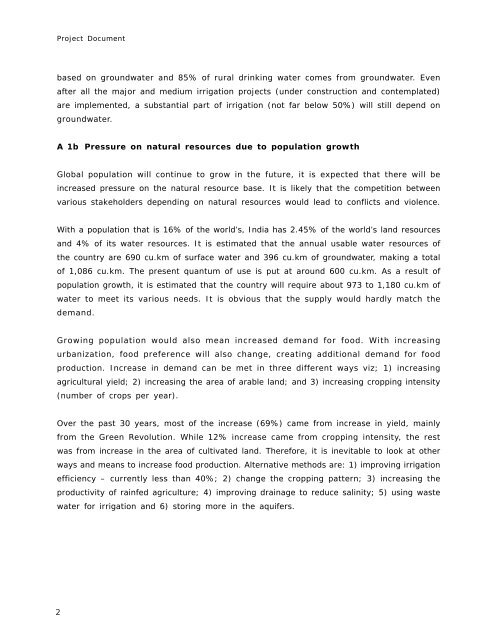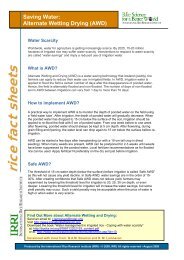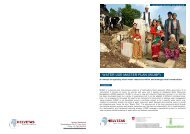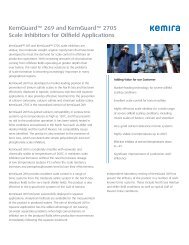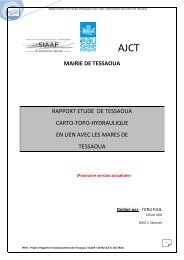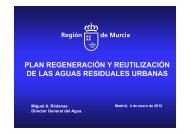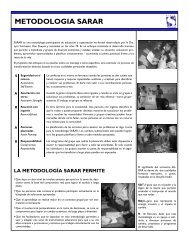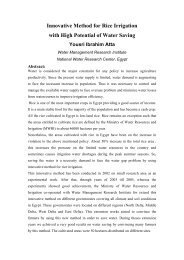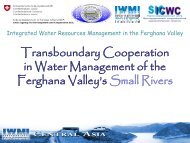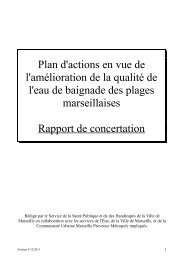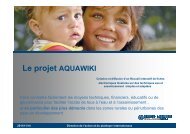FAO Project Document book - Solutions for Water platform - World ...
FAO Project Document book - Solutions for Water platform - World ...
FAO Project Document book - Solutions for Water platform - World ...
Create successful ePaper yourself
Turn your PDF publications into a flip-book with our unique Google optimized e-Paper software.
<strong>Project</strong> <strong>Document</strong><br />
based on groundwater and 85% of rural drinking water comes from groundwater. Even<br />
after all the major and medium irrigation projects (under construction and contemplated)<br />
are implemented, a substantial part of irrigation (not far below 50%) will still depend on<br />
groundwater.<br />
A 1b<br />
Pressure on natural resources due to population growth<br />
Global population will continue to grow in the future, it is expected that there will be<br />
increased pressure on the natural resource base. It is likely that the competition between<br />
various stakeholders depending on natural resources would lead to conflicts and violence.<br />
With a population that is 16% of the world’s, India has 2.45% of the world’s land resources<br />
and 4% of its water resources. It is estimated that the annual usable water resources of<br />
the country are 690 cu.km of surface water and 396 cu.km of groundwater, making a total<br />
of 1,086 cu.km. The present quantum of use is put at around 600 cu.km. As a result of<br />
population growth, it is estimated that the country will require about 973 to 1,180 cu.km of<br />
water to meet its various needs. It is obvious that the supply would hardly match the<br />
demand.<br />
Growing population would also mean increased demand <strong>for</strong> food. With increasing<br />
urbanization, food preference will also change, creating additional demand <strong>for</strong> food<br />
production. Increase in demand can be met in three different ways viz; 1) increasing<br />
agricultural yield; 2) increasing the area of arable land; and 3) increasing cropping intensity<br />
(number of crops per year).<br />
Over the past 30 years, most of the increase (69%) came from increase in yield, mainly<br />
from the Green Revolution. While 12% increase came from cropping intensity, the rest<br />
was from increase in the area of cultivated land. There<strong>for</strong>e, it is inevitable to look at other<br />
ways and means to increase food production. Alternative methods are: 1) improving irrigation<br />
efficiency – currently less than 40%; 2) change the cropping pattern; 3) increasing the<br />
productivity of rainfed agriculture; 4) improving drainage to reduce salinity; 5) using waste<br />
water <strong>for</strong> irrigation and 6) storing more in the aquifers.<br />
2


